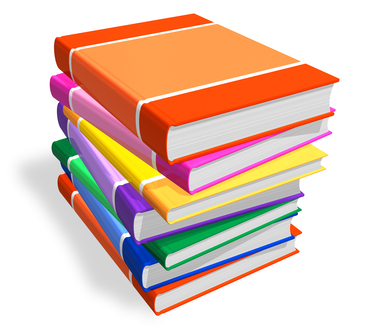 Have you ever faced a situation similar to this? In today’s information overload world, it’s vital to communicate clearly, concisely and effectively. People don’t have time to read book-length emails, and they don’t have the patience to scour badly constructed emails for “buried” points.
Have you ever faced a situation similar to this? In today’s information overload world, it’s vital to communicate clearly, concisely and effectively. People don’t have time to read book-length emails, and they don’t have the patience to scour badly constructed emails for “buried” points.
The better your writing skills are, the better the impression you’ll make on the people around you – including your boss, your colleagues, and your clients. You never know how far these good impressions will take you!
In this article, we’ll look at how you can improve your writing skills and avoid common mistakes.
Audience and FormatÂ
The first step to writing clearly is choosing the appropriate format. Do you need to send an informal email? Write a detailed report? Create advertising copy? Or write a formal letter?
The format, as well as your audience, will define your “writing voice” – that is, how formal or relaxed the tone should be. For instance, if you write an email to a prospective client, should it have the same tone as an email to a friend, of course not.
Start by identifying who will read your message. Is it targeted at senior managers, the entire human resources team, or a small group of engineers? With everything you write, your readers, or recipients, should define your tone as well as aspects of the content.
Composition and Style
Once you know what you’re writing, and for whom you’re writing, you actually have to start writing.
A blank, white computer screen is often intimidating. And it’s easy to get stuck because you don’t know how to start. Try these tips for composing and styling your document:
- Pick your Audience – Remember, your readers may know nothing about what you’re telling them. What do they need to know first?
- Outline It – This is especially helpful if you’re writing a longer document such as a report, presentation, or speech. Outlines help you identify which steps to take in which order, and they help you break the task up into manageable pieces of information.
- Use AIDA – If you’re writing something that must inspire action in the reader. Attention-Interest-Desire-Action (AIDA) formula. These four steps can help guide you through the writing process.
- Try Empathy – For instance, if you’re writing a sales letter for prospective clients, why should they care about your product or sales pitch? What’s the benefit for them? Remember your audience’s needs at all times.
- Use the Rhetorical Triangle – If you’re trying to persuade someone to do something, make sure that you communicate why people should listen to you, pitch your message in a way that engages your audience, and present information rationally and coherently. Rhetorical Triangle can help you make your case in the most effective way.
- Identify your Topic – If you’re having trouble defining the main theme of your message, pretend that you have 15 seconds to explain your position. What do you say? This is likely to be your main theme.
- Use Simple Language – Unless you’re writing a scholarly article, it’s usually best to use simple, direct language. Don’t use long words just to impress people.
Structure
Your document should be as “reader friendly” as possible. Use headings, subheadings, bullet points, and numbering whenever possible to break up the text.
After all, what’s easier to read – a page full of long paragraphs, or a page that’s broken up into short paragraphs, with section headings and bullet points? A document that’s easy to scan will get read more often than a document with long, dense paragraphs of text.
Headers should grab the reader’s attention. Questions is often a good idea, especially in advertising copy or reports, because questions help keep the reader engaged and curious.
In emails and proposals, use short, factual headings and subheadings, like the ones in this article.
Adding graphs and charts is also a smart way to break up your text. These visual aids not only keep the reader’s eye engaged, but they can communicate important information much more quickly than text.
Grammatical Errors
You probably don’t need us to tell you that errors in your document will make you look unprofessional. It’s essential to learn grammar properly, and to avoid common mistakes that your spell checker won’t find.
Here are some examples of commonly misused words:
- Affect/effect
“Affect” is a verb meaning to influence. (Example: The economic forecast will affect our projected income.)
“Effect” is a noun meaning the result or outcome. (Example: What is the effect of the proposal?)
- Then/than
“Then” is typically an adverb indicating a sequence in time. (Example: We went to dinner, then we saw a movie.)
“Than” is a conjunction used for comparison. (Example: The dinner was more expensive than the movie.)
- Your/you’re
“Your” is a possessive. (Example: Is that your file?)
“You’re” is a contraction of “you are.” (Example: You’re the new manager.)
Note: Also watch out for other common homophones (words that sound alike but have different spellings and meanings) – such as their/they’re/there, to/too/two, and so on.
- Its/it’s
“Its” is a possessive. (Example: Is that its motor?)
“It’s” is a contraction of “It is.” (Example: It’s often that heavy.) (Yes, it is this way around!)
- Company’s/companies (and other possessives versus plurals)
“Company’s” indicates possession. (Example: The company’s trucks hadn’t been maintained properly.)
“Companies” is plural. (Example: The companies in this industry are suffering.)
The things addressed above will help you keep your content clear and effective. There is nothing that frustrates a reader more than having to figure out what the writer is trying to say. Actually they don’t even stay long enough to find out. Use these tips to make sure your readers stay.
